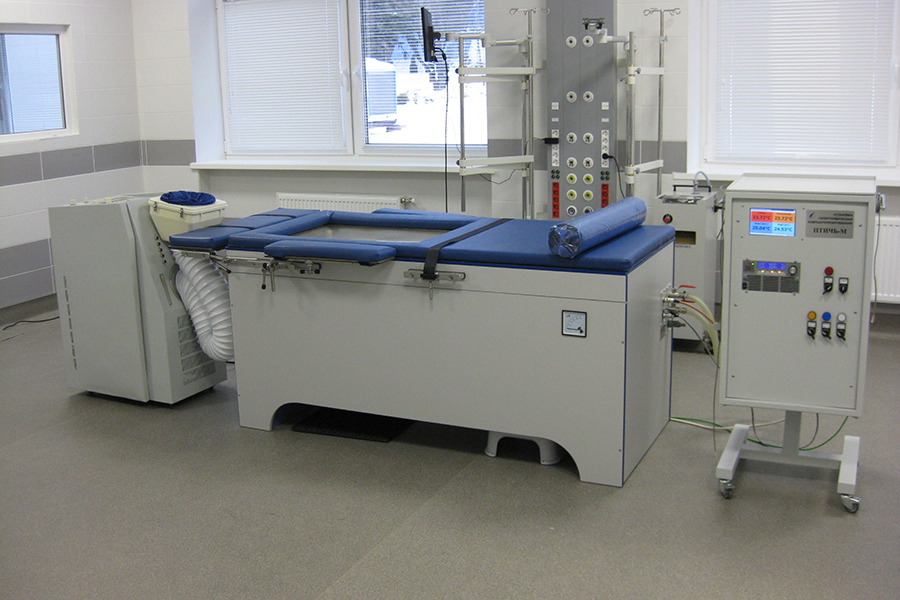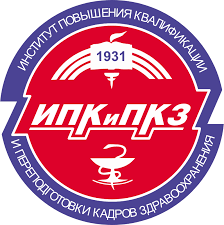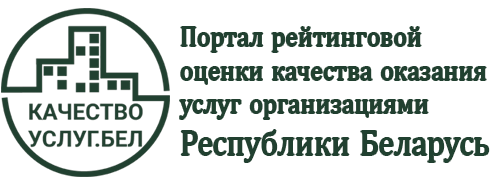Hyperthermia
The initial national studies in this field were commenced by the Institute`s employees on the initiative of Prof. N.N. Alexandrov. Director of the Institute ( 1960-1981), MDSc, Corresponding Member of the USSR Academy of Medical Sciences, winner of the BSSR State Prize in 1968, and they were successfully continued by his disciple Prof. S.Z. Fradkin who supervised the development of an essentially novel scientific line of priority in oncology- local and whole-body hyperthermia enabling to enhance 1.5-2 – fold the efficacy of treatment for cancer patients in the regimens of multimodality therapy. It was the first time the techniques of thermoradio-, and thermoradiochemotherapy were developed and adopted in practice.
In 1988, S.Z. Fradkin, E.A. Zhavrid. I.G. Zhakov, V.I. Bezruchko, Yu. P. Istomen, I.I. Malinovsky, T.V. Khodina, N.E. Savchenko were awarded the BSSR State Prize for the development and practical adoption of treatment modalities for malignant tumors, utilizing hyperthermia and hyperglycemia.
For the time being, experience has been acquired in employing this treatment in more than 1000 patients with various types of malignant neoplasms (stages III-IV) skin melanoma, renal cancer, ovarian cancer, sarcomas of soft tissues, uterine cervix cancer and others).Whole-body high-frequency electromagnetic controlled hyperthermia (with induced hyperglycemia and multidrug chemotherapy) for metastatic renal cancer, skin melanoma, ovarian cancer, retroperitoneal sarcomas and other neoplasms resistant to standard regimens of chemotherapy and chemoradiotherapy; local hyperthermia for malignant neoplasms (stages III-IV) unresectable locally advanced uterine cervix cancer, tumors of small pelvis organs and others).
Treatment for far-advanced cancers:
The department of Hyperthermia and Photodynamic Therapy provides care for patients with far-advanced forms of disseminated skin melanoma, breast cancer, renal cancer, ovarian cancer, soft tissue and bone sarcomas, including children older than 7 years of age.
Hyperthermia considerably enhances the efficacy of radiotherapy and chemotherapy in combination treatment. Hyperthermia is not a panacea, however, the inclusion of hyperthermia in multimodality treatment for actually any site and any stage considerably improves its outcomes, survival gains and quality of life. Hyperthermia is relevant for any stage of malignant disease.
For initially inoperable tumors, the employment of hyperthermia makes it possible to reduce the extent of surgery, to improve the immediate and long-term outcomes of surgical treatment. Adjuvant hyperthermia in the postoperative period allows to significantly decrease tumors, hyperthermia facilitates the tumor transfer to resect able condition. With late stages of the disease, inclusion of hyperthermia in treatment schemes contributes to achievements of stable disease and clinical remission.
Whole-body and regional hyperthermia treatments are conducted on unique units Ptich and Celsius TCS (Germany). The techniques we use have no analogues in the CIS countries and throughout the world.

The Celsius TCS unit (Celcius 42+ GmbH, Germany) for local hyperthermia. The Ptich M unit (republic of Belarus) for whole-body high- frequency controlled hyperthermia.
электромагнитной управляемой гипертермии
«Птичь М» (научно-исследовательская
лаборатория информационно-измерительных
систем факультета радиофизики и
компьютерных технологий БГУ, Республика
Беларусь)












